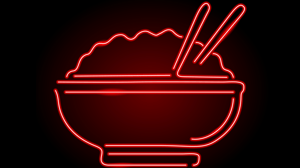Researchers at Hiroshima University in Japan have developed an innovative technique to sustainably use the large amounts of silicon contained in manufacturing waste.
Every year around 100 million tonnes of rice husk, the indigestible outer part that is separated from the grain by refining processes, are produced worldwide. A huge amount of residue, rich in silicon and other substances has been treated as waste up to now but could become the focus of a major innovation: completely sustainable LEDs made from these materials.
LEDs (light-emitting diodes) are devices that emit light particles (photons) when an electric current passes through them. They are used in many industrial sectors but are best known in LED bulbs, which have now replaced old incandescent bulbs.
A discovery of LED technology from a study in Japan
Engineers and chemists at the Natural Science Center for Basic Research and Development at Hiroshima University in Japan have found a way to transform husk (and more importantly, the silicon it contains) into LEDs using a cutting-edge technique and have published the results of their work in the scientific journal ACS Sustainable Chemistry & Engineering.
Rice husk, the researchers write, is an excellent source of high-quality silicon powder, as up to 20% of the weight of rice husks is silicon. Using a special method of chemical synthesis, crystalline silicon particles of 3 nanometres (billionths of a metre) can be extracted which, when placed in a colloidal solution, have an orangey-red photoluminescence. The colloidal solution can then be used to produce LEDs known as SiQDs in technical terms.
Environmental risks of LEDs
“SiQD LEDs manufactured in the usual way often contain toxic materials like cadmium, lead or other heavy metals," explains Ken-Ichi Saitow - author of the study and professor of chemistry at Hiroshima University - and may therefore contaminate the environment. However, our manufacturing method minimises this risk. This is the first research ever carried out to produce an LED from rice husk”.
Since it was discovered in the 1950s, porous silicon (the more 'efficient' version of silicon) has been studied for possible uses in lithium ion batteries, luminous materials, biomedical sensors and drug delivery systems, because there is an abundance in nature and it is spontaneously photoluminescent, thanks to its point-like structure (of infinitesimal, quantum dimensions), which allows it to behave like a semiconductor.
The method developed by Japanese researchers involves first grinding the rice husks and then extracting the silicon powder. After various physical and chemical processes, the end result is a purified nanometre-sized powder. Finally, other stages make the powder more soluble, and, after further steps, it produces silicon diodes (SiQDs) that emit an orangey-red light with a high luminescence efficiency of over 20%.
Studies will continue to make silicon diodes even more efficient and in different colours to orange/red. In the long term, the method may also be applied to other plants like sugar cane, wheat, barley or grasses (and their waste), all of which contain silicon and could therefore potentially become LEDs or similar non-toxic devices.




